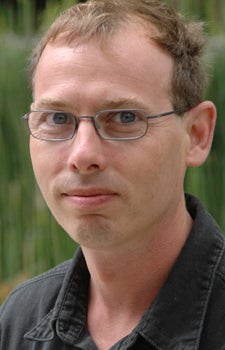Breaking the Rules
Former and current USC Dornsife physicists have led a study that represents the first, quantitative account of the universal features of disordered bosons — or quantum particles — in magnetic materials.
The study published in the Sept. 20 edition of Nature magazine broadens our understanding of quantum mechanics and challenges the accepted predication in quantum theory.
“It’s remarkable to find such universality in disordered quantum systems,” said co-author Stephan Haas, professor of physics and astronomy and vice dean for research in USC Dornsife. “And it’s even more amazing that we may have finally identified a real-life example for one of the most elusive quantum glasses in nature.”
Led by former USC Dornsife graduate student Rong Yu, and also co-authored by former USC Dornsife postdoctoral researcher Tommaso Roscilde, the study included collaboration from scientists at Rice University in Texas, the University of Florida, the University of São Paulo in Brazil, the Max-Planck Institute for Chemical Physics of Solids in Germany, Los Alamos National Lab in N.M., and Ecole Normale Supérieure de Lyon in France.
Haas, Tommaso and Yu began studying the behavior of quantum glasses in the early 2000’s using USC’s high-performance supercomputer cluster as well as the supercomputer at Oak Ridge National Lab, which is sponsored by the U.S. Department of Energy.
“The paper is an observation of a very novel quantum phase in physics,” said Yu who graduated with a Ph.D. in physics in 2007. “It deepens our knowledge of the quantum world.”

Haas began studying the behavior of quantum glasses in the early 2000’s using in part USC’s high-performance supercomputer cluster. He co-authored a recent study in Nature that corrects the accepted rules of quantum theory. Photo by Ben Pack.
Quantum particles behave as waves, and they probe the space around them over a size much bigger than their physical size — it is said they are delocalized in a “quantum superposition” of many different locations, corresponding to the wave that describes the state of the particle.
This extended, wave-like nature of quantum particles can make them capable of tunneling through an isolated obstacle, but it also renders them extremely sensitive to the presence of many obstacles, and much more prone to be trapped.
Think of it this way: A helicopter can fly over mountain ranges without being disturbed by the underlying landscape, provided that it flies higher than the highest mountain, or provided that for the height at which it flies, there is a labyrinth of valleys allowing it to cross the mountain chain.
But a “quantum helicopter” has a very good chance of being unable to cross the chain, even if there is a percolating path of valleys, and, in some situations, even if it has enough energy to fly over the highest peak. What happens instead is that its quantum wave remains trapped, due to the interference of the multiply reflected wave at the various mountain peaks. This gives rise to a phenomenon known as Anderson localization.
Localization is a pervasive phenomenon in the physics of waves, potentially occurring every time a wave traverses a disordered medium, namely a random arrangement of obstacles. In quantum mechanics it can prevent electrons from flowing through a disordered solid.
“Given that disorder is ubiquitous in nature, one could reasonably ask how the transport of quantum particles can be possible at all,” Haas said. “The strategies to escape localization are multiple, and depend on the system under consideration. In this paper we explore localization in a system of interacting bosons and their remarkable collective transition to a delocalized state.”
The group also determined several universal features in the magnetic field-temperature phase diagram of disordered quantum magnets, including the quantum phase transition between delocalized superfluid and localized glassy states.
“This finding demonstrates the power of quantum mechanics and in particular phenomena you don’t observe in a classical world,” Haas said. “It is new and exciting state of matter.”
Roscilde spent 2½ years as a postdoctoral researcher under the supervision of Haas from 2003 to 2005.
“The question of the transition from boson localization to condensation in condensed matter has been a very long standing one,” he said. “We hope our work opens a new path to investigate this transition.”
Their findings rewrote the rule for predicting the conditions under which the transition would occur between the two quantum states.
The study builds the foundation that researchers must explore if technology is ever to fully utilize the properties of quantum mechanics.
This research is funded by the U.S. Department of Energy.